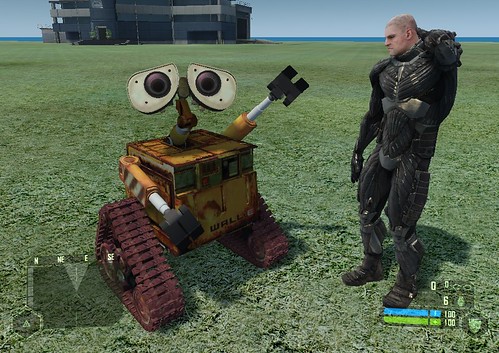I am currently working on some tutorials an modified scripts to make this stuff easier on others.
However to use ANY 3D modeling program with ANY game, you need to read to documentation on both and learn both. I already knew a ton about SketchUp but nothing about hammer when I started. I constantly read tutorials and look at their developer wiki site. You can't just jump in and hope you did stuff right.
Right now I still spend a good amount of time correcting my own mistakes. But the tutorials will come soon. I have already modified the masstexture importing ruby script to properly name materials imported from L4D. Below are some tips I posted on the steam forums for working in SketchUp for export to hammer.
However answer to exporting VMFs is that SketchUp has two types of ways to group faces: Groups, and Components.
Groups are single-instances, you can make a copy of a group, but editing one group won't affect others.
Components are MUCH more powerful. Components are copies of each other, if you edit one component in a model ALL other components of the same name are also edited. Plus you can flip and mirror components. So for example in my buildings shown so far, most are symmetrical. I only have to model half the building. All the windows are components, so I only have to model one and the rest will follow.
When you export a VMF to Source it only looks for one type of object: A block or brush. A block of brush in Hammer is a convex object consisting of several faces.
See here on what is convex and what is concave:
http://developer.valvesoftware.com/wiki/Concave
The simplest type if convex object is a six-sided block. So in SketchUp that is a grouping or component consisting of six single faces.
There are four things that can break exporting a proper brush object:
1: Un-connected or broken lines. These are lines that either go nowhere, or don't meet at two other lines. There is ruby scipt here that can help to fix broken lines:
http://www.crai.archi.fr/RubyLibrary...roken_lines.rb
And one here that can help to remove lines that go nowhere:
http://www.smustard.com/script/StrayLines
2: Lines that split up a face. These can be hidden, or visible (Show hidden geometry reveals these) Erase these lines that split a single flat face in two.
3: Reversed faces. All faces in SketchUp have two sides, a front and back. You can use the Style editor to make the back faces show up as a different color. I choose magenta similar to the error texture in Hammer.
A VMF model can't have any reversed faces visible.
4: Textures on a reversed face. SketchUp allows you to apply textures to a reversed face. So even if you can't see them, you may have accidentally applied a texture to the back-side of a face. This can happen for example if a texture is applied to a face before extruding. The only good way to check for this is to remove a face and look inside the block. This can be time consuming, and caught me bad on one of my models. Tips: When extruding always extrude forwards to prevent this issue.
You can group multiple groups or components into larger and more complex groups and components. When you export these into hammer the groupings are preserved, you can un-group and re-group the items as needed in hammer.
As mentioned before, there isn't any UV mapping when exporting VMF models. All textures get reset to standard scaling upon export. So cleanup is often needed in Hammer. I have sent valve feedback on this, there is also a e-mail address on the wiki if you want to send your own feedback.
If you are exporting models and not brushes, you can do lots more, such as single floating faces, concave objects, proper UV mapping, etc...
Finally a WARNING about the 3DWarehouse.
1: Most models in the 3DWarehouse still have copyright protection the same as most user created content. Ask for permission before use.
2: Many of the models in the 3DWarehouse are NOT game quality. They will often be built in a messy fashion with too many polygons, unconnected lines, massive textures, improper scale, etc... Often the model rating will help to guide you to well made models. Some even not built to scale.
3: The 3DWarehouse however IS a great place to get references for making your own models.
















